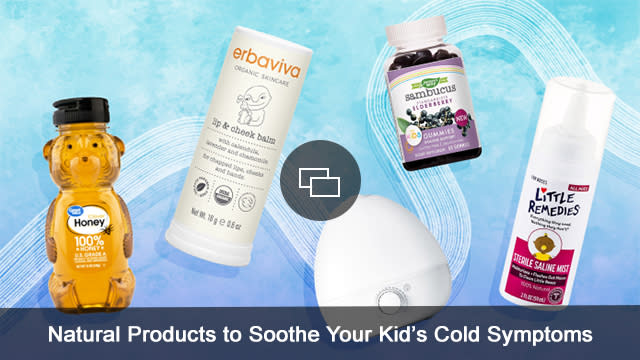Babies Are Drinking More Than A Million Pieces of Microplastic A Day From Their Bottles

One of the many weird health facts you learn (and hate the minute you learn) is that humans eat a lot of plastic. Like, a whole lot of it. Every day. Studies from recent years have put the weight of plastic consumed by each person at around five grams per week (that’s like if you ate your credit card every week) through environmental microplastics (tiny bits of plastic breaking down and off of larger plastics getting into your body after becoming part of the food chain via water, sea food, honey, sugar, rice, pasta, bread, milk, utensils, cutlery, toothpaste, toothbrushes and more. It’s a lot — and something health officials and environmentalists are concerned about as we get a better picture of what a lifetime of consuming this much plastic means for a body. (Hello, eco-anxiety, my old friend.)
The ingestion is also affecting the littlest members of our species (at a frightening rate), with a new study published in Nature this week finding that the average infant drinking out of a baby bottle consumes nearly 1.6 million particles of microplastic per day. (2,600 times the amount experts estimate adults consume).
Plastic baby bottles shed millions of microplastics when shaken https://t.co/HCKUKr4a44 pic.twitter.com/Endv4DfO8V
— New Scientist (@newscientist) October 19, 2020
Examining the amount of microplastic found in baby formula in each bottle after heating it up, researchers found there were at least 1.3 million plastic particles per liter of formula. They found plastic in the formula of glass bottles and plastic bottles like but found that formula reheated in plastic containers upped their plastic content — as well as shaking the formula in the bottle leading to more plastic particles in the baby’s food. They noted that using World Health Organization (WHO) recommendations for sterilizing baby bottles (necessary for eliminating bacteria) that there were increased levels of the microplastics in the formula after the fact (because the hot water needed to clean the bottles released more plastic than colder water).
“We found that sterilization, which is recommended by the WHO to eliminate bacteria from IFBs, exacerbates MP release,” researchers note. “In practice, it may be possible to mitigate against the undesirable consequences of sterilization by introducing an additional washing step using room temperature sterilized water (that is, boiled water using non-PP kettles and cooled down to room temperature) to rinse away loose MPs present on the walls of the sterilized IFB.”
Researchers do note that this study and their findings also apply to breastfeeding mothers, although there is less of a risk: “To date, there is no evidence for the presence of MPs in breast milk. Several nano-sized metal and inorganic particles… are known to pass through the mammary glands but further studies are needed to assess whether micro- and nano-sized plastic particles are expressed in human milk,” the researchers write. “However, our findings suggest that greater care may be needed in the handling of breast milk. Most breast pump kits and feeding bottles are PP based and risk the generation of MPs during cleaning and sterilization. In the United States, reheating of previously pumped breast milk is common practice among breastfeeding mothers, 12 percent of whom reheat the milk using a microwave oven. Therefore, while the level of exposure to MPs is significantly reduced for breastfed infants, there are still potential risks that can be mitigated against by changing local practice.”
We’re beginning to understand what the presence of microplastics in our food chain does to human and animal bodies, but we are still in uncharted waters. It’s understood, as Scientific American reported in 2018 that these plastics can lead to chemicals from “hormone-disrupting bisphenol A (BPA) to pesticides” leaking into our bodies and causing harm to our organs, guts and bloodstreams. Other researchers in 2019 (as part of a report from sustainable water company Bluewater) called the potential damage from microplastics in our oceans and our diets “the number one threat” to humans, noting that the thousands — 85,000 at least, with thousands of them classified as endocrine disrupting chemicals (EDCs) — of different chemicals can lead to harmful changes in our blood pressure, fertility issues, immune system problems and causing multiple diseases (including cancer).
“Not only are plastics polluting our oceans and waterways and killing marine life – it’s in all of us and we can’t escape consuming plastics. Global action is urgent and essential to tackling this crisis,” Marco Lambertini, WWF International Director General said after a 2019 WWF study found the adult numbers on plastic consumption. “While research is investigating potential negative effects of plastic on human health, we are all clear that this is a worldwide problem that can only be solved by addressing the root cause of plastic pollution. If we don’t want plastic in our bodies, we need to stop the millions of tons of plastic that continue leaking into nature every year. In order to tackle the plastic crisis, we need urgent action at government, business and consumer levels, and a global treaty with global targets to address plastic pollution.”
The larger effects of inaction on the number of plastics in our environment are ones we’ll be trying to better understand in the health community for years to come — but the sheer amount of plastic consumed by some of our most vulnerable certainly calls for more immediate action and attention to be paid to the issue.
Before you go, check out our favorite all-natural kids’ cold products:
Launch Gallery: Eco-Friendly Disposable Diapers <em>Do</em> Exist — These Are the Best Brands Out There
More from SheKnows
Best of SheKnows
4 Popular Genital Herpes Myths Every Smart Woman Needs to Stop Believing
What Are Keto Macros? (& Why They're Worth Understanding Whether You're Keto or Not)
Sign up for SheKnows' Newsletter. For the latest news, follow us on Facebook, Twitter, and Instagram.


